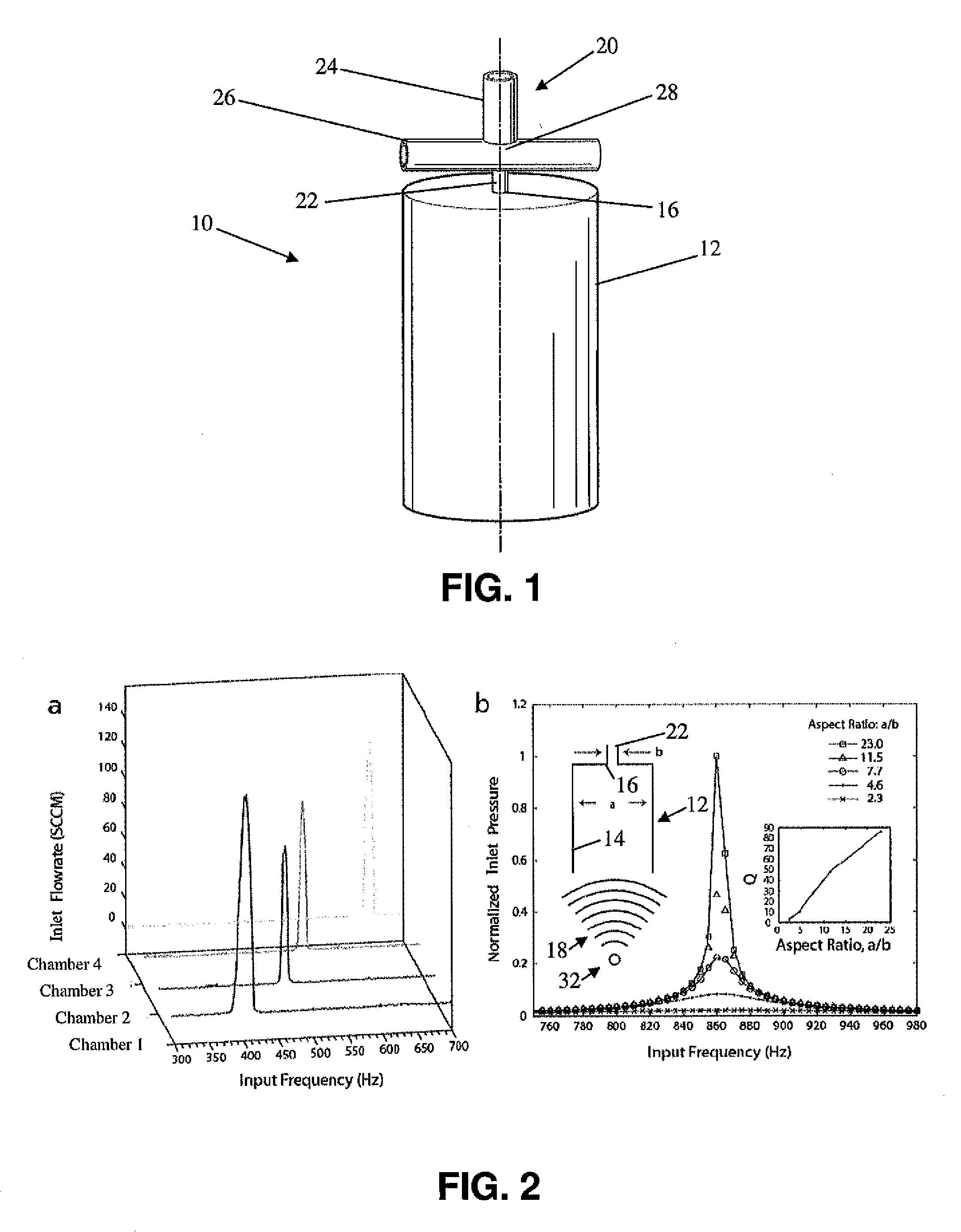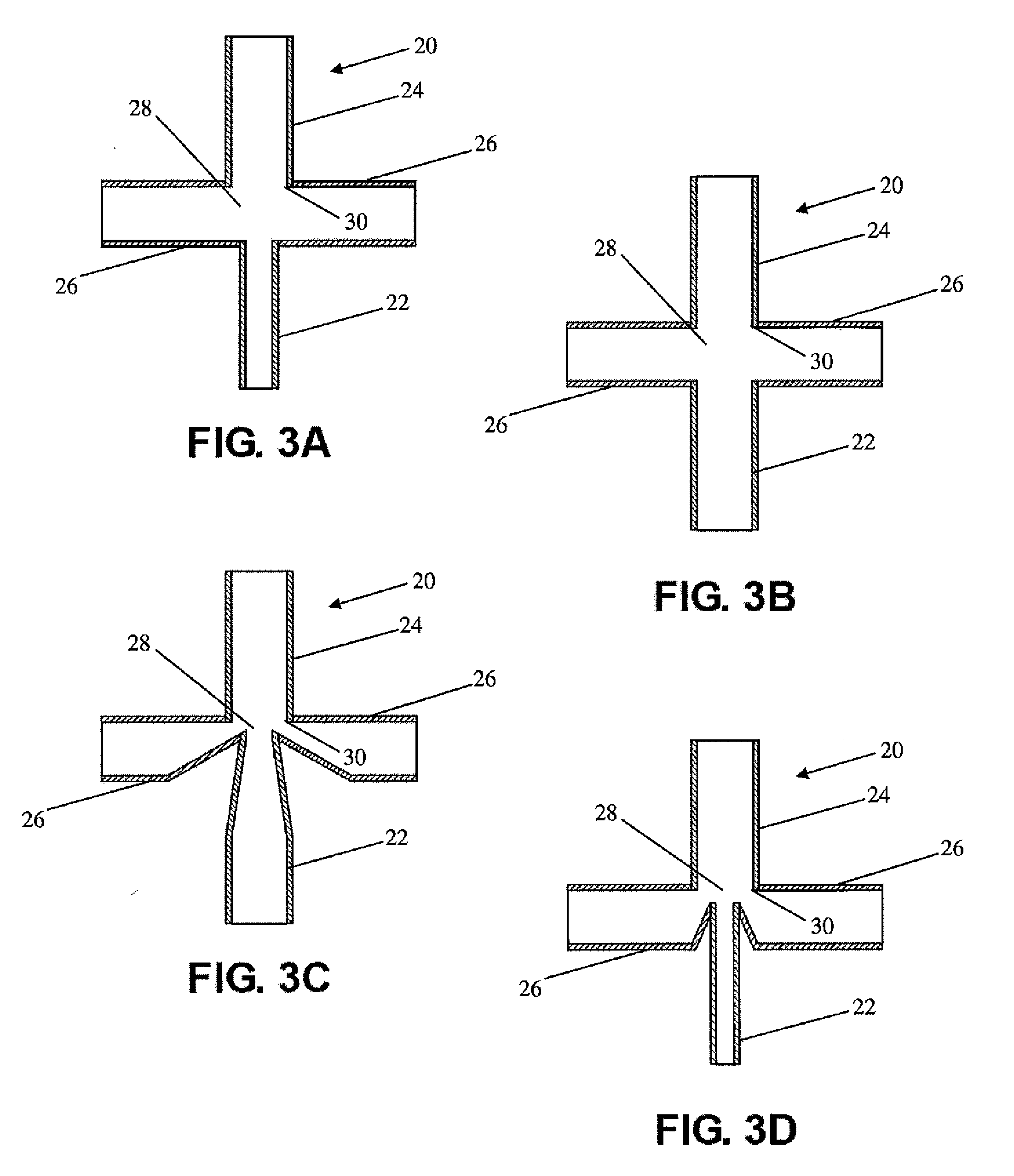Acoustical Fluid Control Mechanism
a fluid control and acoustic technology, applied in the field of acoustic, can solve the problems of insufficient external connections and control equipment required to operate a reasonably complex integrated microfluidic system, difficulty in controlling fluid flow, and difficulty in controlling liquid reagents and samples, so as to eliminate directional flow and maximize the oscillation flow of working fluid
- Summary
- Abstract
- Description
- Claims
- Application Information
AI Technical Summary
Benefits of technology
Problems solved by technology
Method used
Image
Examples
Embodiment Construction
[0026]Referring to the Figures, wherein like numerals indicate like or corresponding parts, an acoustical fluid control mechanism 10 is generally shown at 10 in FIG. 1. The acoustical fluid control mechanism 10 of the instant invention includes a resonance chamber 12 and, more typically, includes a bank of resonance chambers 12 as shown in FIG. 6. Each resonance chamber 12 defines a cavity 14. The resonance chamber 12 (or bank of resonance chambers 12) is designed using principles of resonance and has a geometry that corresponds to a particular resonance frequency. For example, the resonance chamber(s) 12 can be designed using principles of standing wave resonance or Helmholtz resonance, both of which are known in the art. As also known in the art, “resonance frequency” refers to a frequency at which a system tends to oscillate at a larger amplitude than at other frequencies, and typically represents the frequency or frequencies at which maximum oscillation of the system occurs due ...
PUM
 Login to View More
Login to View More Abstract
Description
Claims
Application Information
 Login to View More
Login to View More - R&D
- Intellectual Property
- Life Sciences
- Materials
- Tech Scout
- Unparalleled Data Quality
- Higher Quality Content
- 60% Fewer Hallucinations
Browse by: Latest US Patents, China's latest patents, Technical Efficacy Thesaurus, Application Domain, Technology Topic, Popular Technical Reports.
© 2025 PatSnap. All rights reserved.Legal|Privacy policy|Modern Slavery Act Transparency Statement|Sitemap|About US| Contact US: help@patsnap.com



